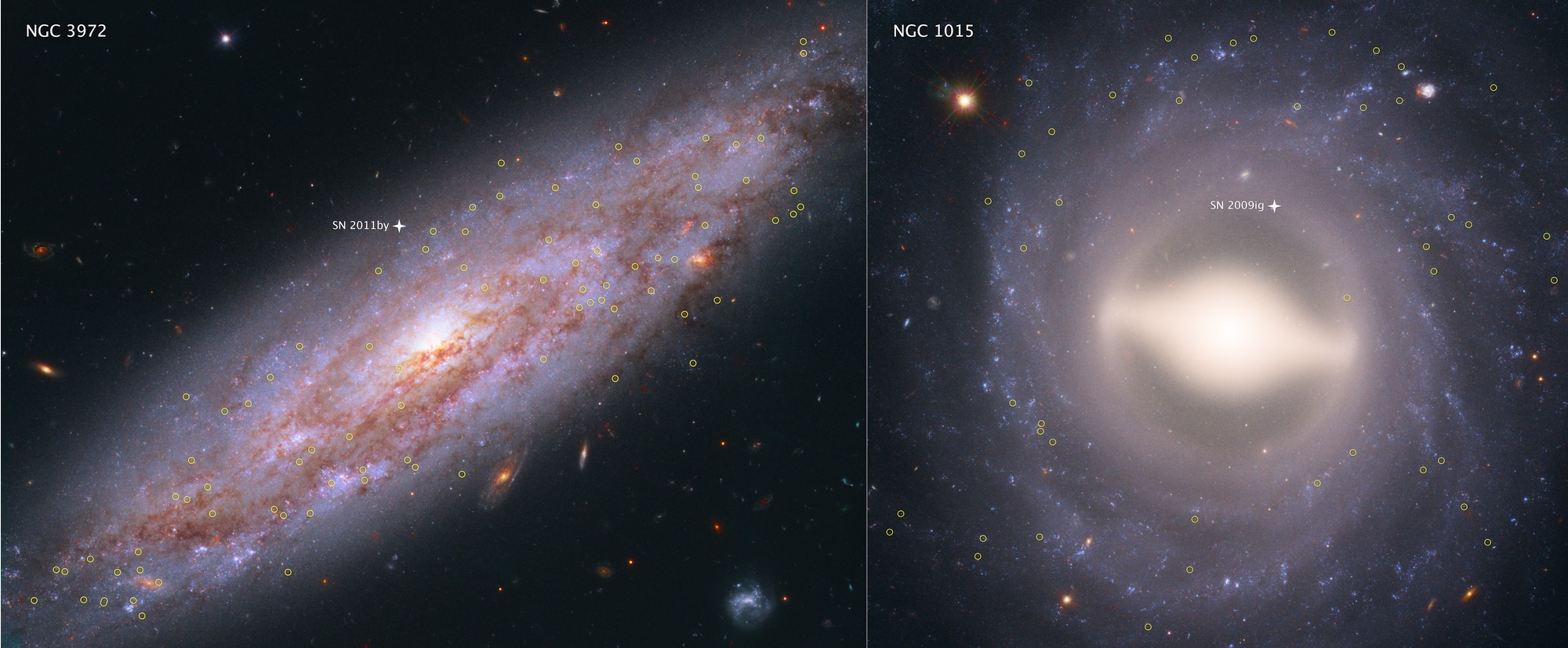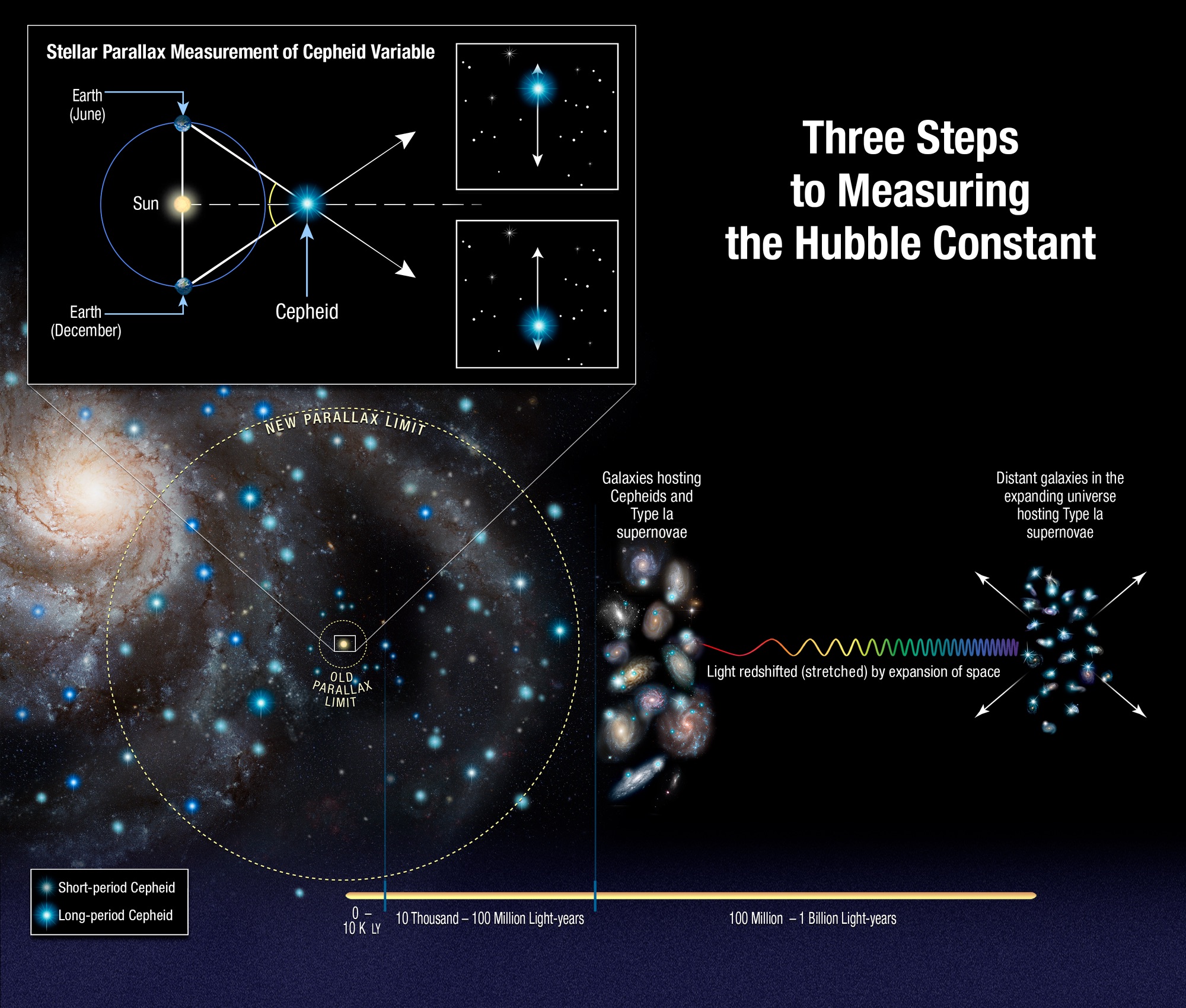The Universe Is Expanding Faster Than We Thought, Hubble Data Suggests

Recent Hubble Space Telescope findings suggest that the universe is expanding much faster than expected — and astronomers say the rules of physics may need to be rewritten in order to understand why.
Scientists use the Hubble Space Telescope to make precise measurements of the universe's expansion rate. However, observations for a new study don't match up with previous predictions based on the universe's trajectory following the Big Bang, according to a statement from the Space Telescope Science Institute (STScI).
"The community is really grappling with understanding the meaning of this discrepancy," Adam Riess, Nobel laureate and lead researcher on the study describing the new findings, said in the statement. Riess is an astronomer at STScI and a professor at Johns Hopkins University. [Our Expanding Universe: Age, History & Other Facts]
The Hubble Space Telescope measures the distance to other galaxies by examining a type of star that varies in brightness. These stars, called Cepheid variables, brighten and dim in a predictable way that lets researchers judge the distance to them. This data is then used to measure the universe's expansion rate, known as the Hubble constant.
The new findings show that eight Cepheid variables in our Milky Way galaxy are up to 10 times farther away than any previously analyzed star of this kind. Those Cepheids are more challenging to measure than others because they reside between 6,000 and 12,000 light-years from Earth. To handle that distance, the researchers developed a new scanning technique that allowed the Hubble Space Telescope to periodically measure a star's position at a rate of 1,000 times per minute, thus increasing the accuracy of the stars' true brightness and distance, according to the statement.

The researchers compared their findings to earlier data from the European Space Agency's (ESA) Planck satellite. During its four-year mission, the Planck satellite mapped leftover radiation from the Big Bang, also known as the cosmic microwave background. The Planck data revealed a Hubble constant between 67 and 69 kilometers per second per megaparsec. (A megaparsec is roughly 3 million light-years.)
However, the Planck data gives a constant about 9 percent lower than that of the new Hubble measurements, which estimate that the universe is expanding at 73 kilometers per second per megaparsec, therefore suggesting that galaxies are moving faster than expected, according to the statement.
Get the Space.com Newsletter
Breaking space news, the latest updates on rocket launches, skywatching events and more!
"Both results have been tested multiple ways, so barring a series of unrelated mistakes, it is increasingly likely that this is not a bug but a feature of the universe," Riess said.
One possible explanation for the discrepancy is that dark energy — the mysterious force known to be accelerating the cosmos — is driving galaxies farther apart with greater intensity. In this case, the acceleration of the universe may not have a constant value but rather may change over time.
Also, it's possible that elusive dark matter, which accounts for 80 percent of the matter in the universe, interacts more strongly with visible matter or radiation than once thought, the researchers said.
Another possible explanation includes a new kind of subatomic particle that travels close to the speed of light and would be affected only by gravity. Researchers named the superfast particles sterile neutrinos, and collectively, these particles are called dark radiation, according to the study, which has been accepted for publication in The Astrophysical Journal.
"Any of these scenarios would change the contents of the early universe, leading to inconsistencies in theoretical models," STScI representatives said in the statement. "These inconsistencies would result in an incorrect value for the Hubble constant, inferred from observations of the young cosmos. This value would then be at odds with the number derived from the Hubble observations."
The team plans to use data from the Hubble Space Telescope and ESA's Gaia space observatory to measure the precise positions and distances of stars and to further refine estimates of the universe's expansion rate.
Follow Samantha Mathewson @Sam_Ashley13. Follow us @Spacedotcom, Facebook and Google+. Original article on Space.com.
Join our Space Forums to keep talking space on the latest missions, night sky and more! And if you have a news tip, correction or comment, let us know at: community@space.com.

Samantha Mathewson joined Space.com as an intern in the summer of 2016. She received a B.A. in Journalism and Environmental Science at the University of New Haven, in Connecticut. Previously, her work has been published in Nature World News. When not writing or reading about science, Samantha enjoys traveling to new places and taking photos! You can follow her on Twitter @Sam_Ashley13.









